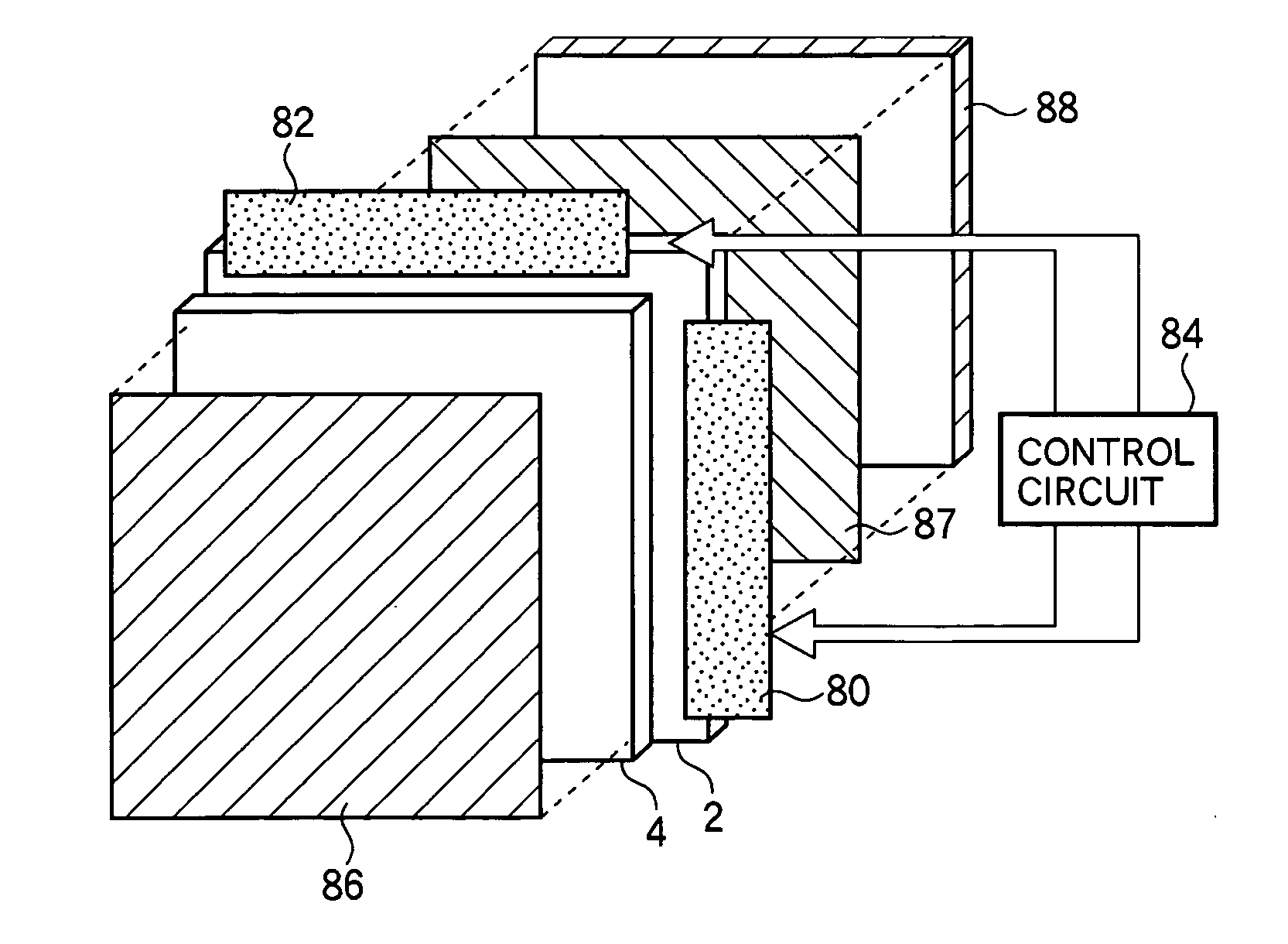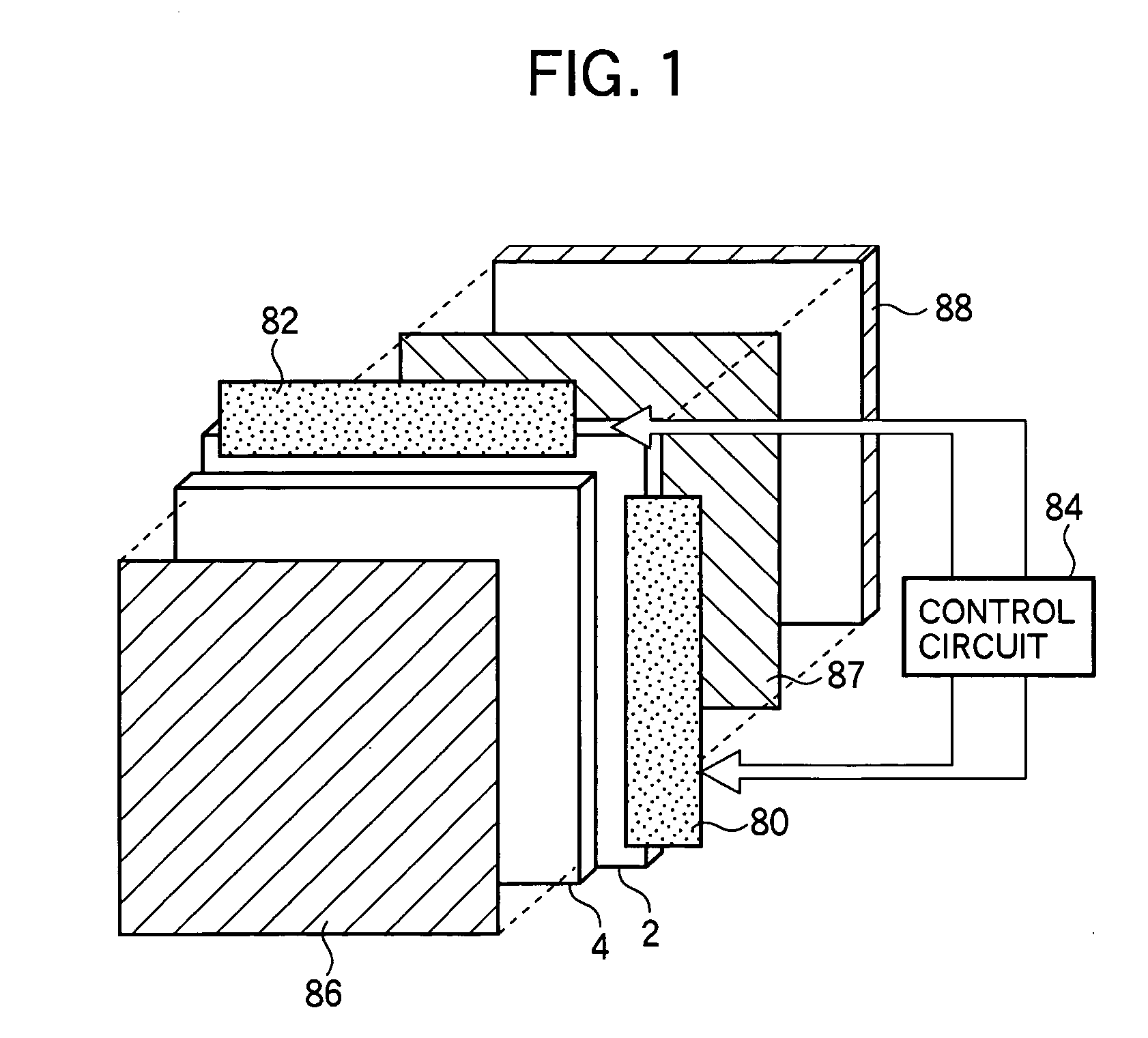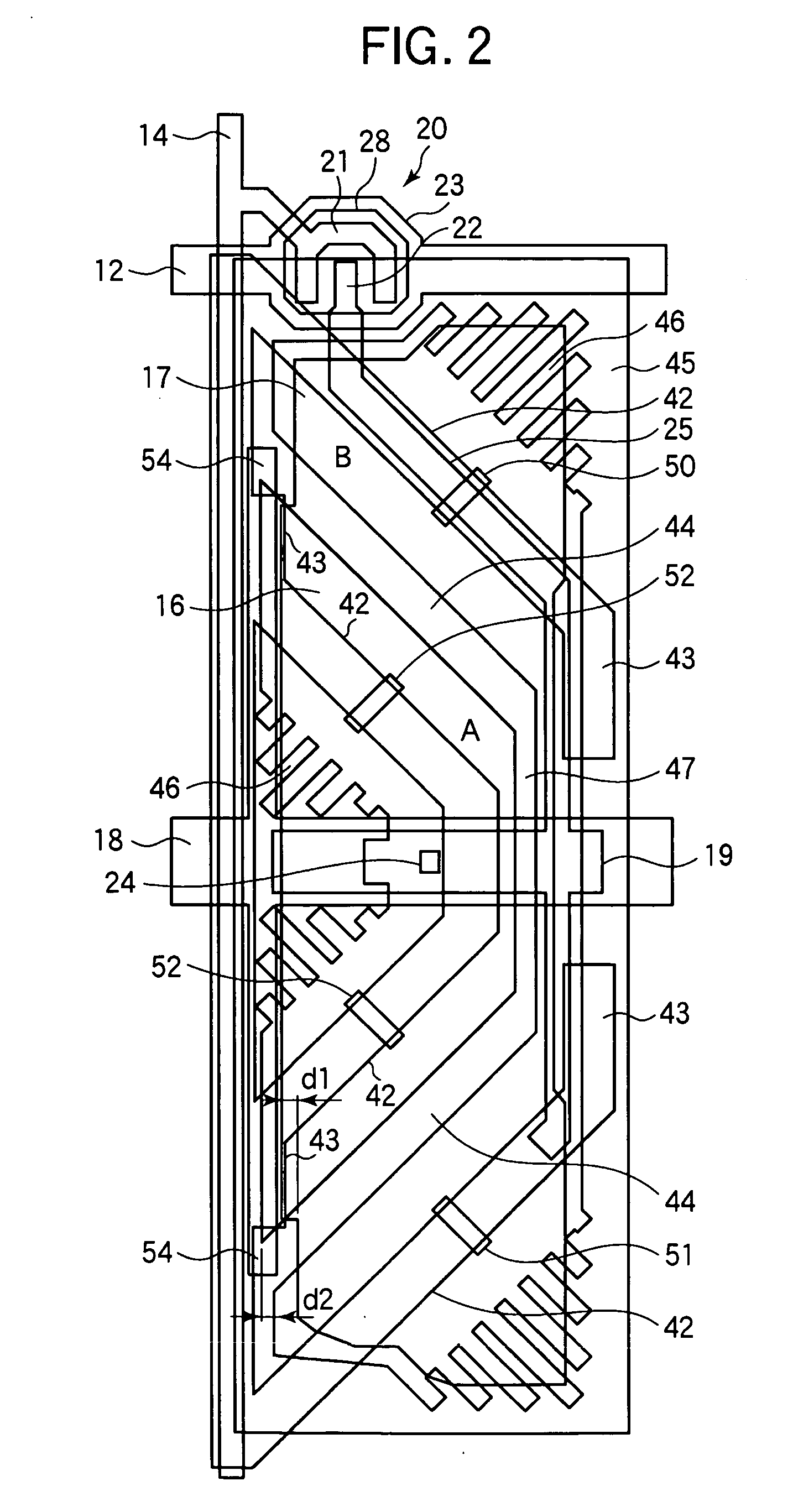Liquid crystal display device
a liquid crystal display and display device technology, applied in non-linear optics, instruments, optics, etc., can solve the problems of lowering the display quality of the liquid crystal display device, different directions, and t-v characteristics obtained, and achieve superior display quality and high luminance.
- Summary
- Abstract
- Description
- Claims
- Application Information
AI Technical Summary
Benefits of technology
Problems solved by technology
Method used
Image
Examples
first embodiment
[First Embodiment]
[0039] A liquid crystal display device according to a first embodiment of the present invention will be described below with reference to FIGS. 1-6.
[0040]FIG. 1 schematically shows the configuration of the liquid crystal display device according to this embodiment. As shown in FIG. 1, the liquid crystal display device has a TFT substrate 2 which is provided with gate bus lines and drain bus lines that cross each other with an insulating film interposed in between, TFTs which are formed for the respective pixels, and pixel electrodes. The liquid crystal display device is also equipped with a counter substrate 4 opposed to the TFT substrate 2, in which color filters and a common electrode are formed and a liquid crystal 6 (not shown in FIG. 1) which is sealed between the substrates 2 and 4 and has negative dielectric anisotropy, for example. Vertical alignment films (not shown) for aligning the liquid crystal 6 vertically are formed at the boundary between the liqui...
second embodiment
[Second Embodiment]
[0061] Next, a liquid crystal display device according to a second embodiment of the invention will be described with reference to FIG. 7. FIG. 7 shows a one-pixel configuration of the liquid crystal display device according to this embodiment. As shown in FIG. 7, this embodiment is different from the first embodiment in that four apertures 52 are disposed in the top portion and the bottom portion of the pixel region (two apertures 52 in each portion) so as to be approximately line-symmetrical with respect to the storage capacitor bus line 18. Two apertures 52 are disposed close to both ends, in the longitudinal direction, of the overlap region, as viewed perpendicularly to the substrate surfaces, of the associated linear projection 42 and the pixel electrode 16. As a result, in the sub-pixel A, singular points (s=−1) are formed in the regions of formation of the two apertures 52 that are close to both ends of the overlap region of the associated linear projection...
third embodiment
[Third Embodiment]
[0063] Next, a liquid crystal display device according to a third embodiment of the invention will be described with reference to FIG. 8. FIG. 8 shows a one-pixel configuration of the liquid crystal display device according to this embodiment. As shown in FIG. 8, the apertures 50, 51, and 52 are disposed in the same manner as in the first embodiment. This embodiment is different from the first embodiment in that that portion of the control capacitance electrode 25 which is located in the top portion of the sub-pixel B has a bypass portion 25a which bypasses the region of formation of the aperture 50 in the plane parallel with the substrate surfaces. With this measure, the aperture 50 does not overlap with the control capacitance electrode 25 and hence no electrode exists on the TFT substrate 2 side in the region of formation of the aperture 50. Therefore, a singular point (s=−1) is formed in the region of formation of the aperture 50 as in the regions of formation ...
PUM
| Property | Measurement | Unit |
|---|---|---|
| thick | aaaaa | aaaaa |
| angle | aaaaa | aaaaa |
| height | aaaaa | aaaaa |
Abstract
Description
Claims
Application Information
 Login to View More
Login to View More - R&D
- Intellectual Property
- Life Sciences
- Materials
- Tech Scout
- Unparalleled Data Quality
- Higher Quality Content
- 60% Fewer Hallucinations
Browse by: Latest US Patents, China's latest patents, Technical Efficacy Thesaurus, Application Domain, Technology Topic, Popular Technical Reports.
© 2025 PatSnap. All rights reserved.Legal|Privacy policy|Modern Slavery Act Transparency Statement|Sitemap|About US| Contact US: help@patsnap.com



